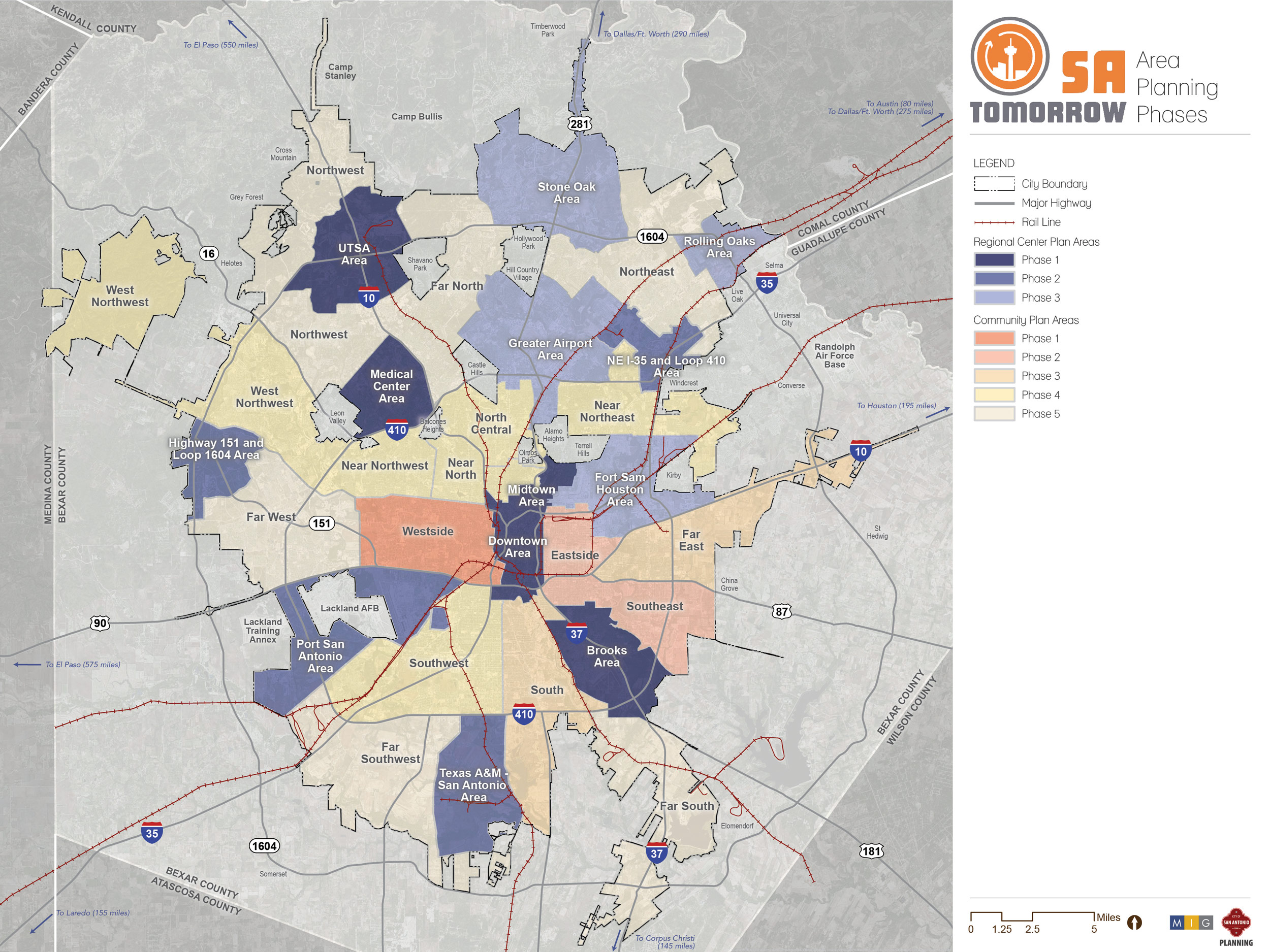The Brooks Area Regional Center is a community of pioneering spirit; with a history influenced by colonial missions, early flight schools & aeronautical medicine. This resilient, pioneering spirit has led the Brooks Area into the forefront of economic activity for the Southside; turning adversity into opportunity by redeveloping Brooks City-base, now a major catalyst for growth on the south side of the City and the anchoring namesake for Regional Center. The Brooks area continues to be cutting edge and forward-thinking; placing emphasis on collaborative & sustainable strategies which benefit the environment, health and wellbeing, education and overall quality of life for the future.
Learn More
The historic and cultural center of the City and home to the world renowned Riverwalk. Downtown is the center of San Antonio’s traditional economy anchored by the tourism, education and health care industries.
Learn More
The Fort Sam Houston activity center includes the Fort Sam Houston military base and also large parts of the City’s older industrial lands along I-35. Fort Sam Houston is a designated Historic Landmark and one of the Army’s oldest installations. Fort Sam is also home to the Brooks Army Medical Center, which is also the only US Department of Defense Level I Trauma Center in US. The activity center is home to over 62,000 jobs, of which 40,000 are military jobs.
Learn More
Centered around the San Antonio International Airport and the confluence of Highway 281 and I-410, the Greater Airport Area Activity Center has the most employment of all regional centers. While SAIA is a major employment asset for the City, the Greater Airport Area center actually has more employment (estimated at 60%) that is not airport related. The area includes large concentrations of office uses and major retail destinations, which makes this area the most economically diverse center.
Learn More
One of the City’s four emerging activity centers, the area has been the center of major development activity over the past decade.
Learn More
The Medical Center Area is not only a primary hub of medical related services and education in San Antonio, but also provides an abundance of job diversity and housing choices. The Medical Center area has the potential to become a leading example for a vibrant, well-connected regional center for people to live, work and visit.
Learn More
Where downtown and historic north side neighborhoods meet, the headwaters of the San Antonio River and San Pedro Springs Creek, with premiere museums, parks, and colleges, Midtown is where diverse San Antonians live, work, and play.
Learn More
The I-35 corridor in the northeast portion of San Antonio has traditionally been the industrial employment center of the City.
Learn More
This center includes the existing Lackland Air Force Base and the redevelopment of the former Kelly Air Force Base, known as Port San Antonio.
Learn More
Located north and east of the intersection of I-35 and Loop 1604 in northeast San Antonio, the Rolling Oaks Area Regional Center is one of four emerging Regional Centers. Major industrial and commercial employment centers serving this area include: Green Mountain Industrial Park, Rolling Oaks Mall, Walmart, and nearby IKEA (in Live Oak, TX). The regional center’s large amount of undeveloped and vacant land presents an opportunity to add a significant number of new residents and jobs by 2040. This growth will be supported by its prime location at the entrance to San Antonio and its superior connectivity to regional highways.
Learn More
The Stone Oak Area Regional Center is located at the confluence of Highway 281 and the N Loop 1604. This regional center includes several established master planned neighborhoods and numerous amenities located to the east and west sides of Highway 281. There is a mixture of uses with over 21,000 jobs and 65,000 residents in the area. It offers a wide variety of attractions, services, and amenities, including parks with active and passive recreational opportunities, quality medical care facilities, top-notch education, and premium retail centers.
Learn More
One of four emerging Activity Centers in City, this center is anchored by the new Texas A&M San Antonio Campus and the Toyota manufacturing campus.
Learn More
Anchored by the University of Texas at San Antonio, the UTSA Activity Center is the center of entertainment and retail for the northern portion of the City. Located at the intersection of I-10 and the 1604 Loop, this Activity Center includes major destinations such as Six Flags Fiesta Texas, The Rim Shopping Center and The Shops at La Cantera.
Learn More

